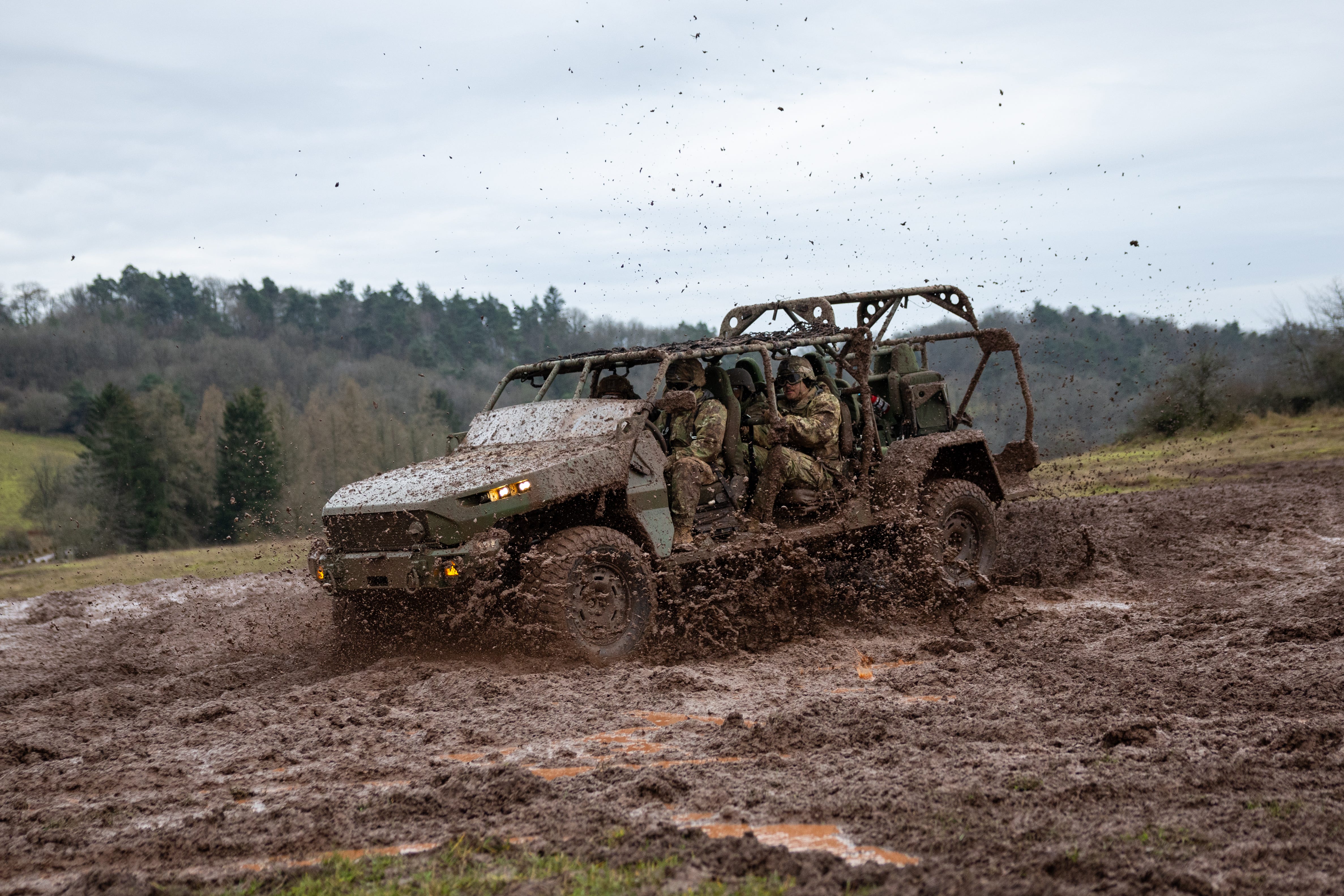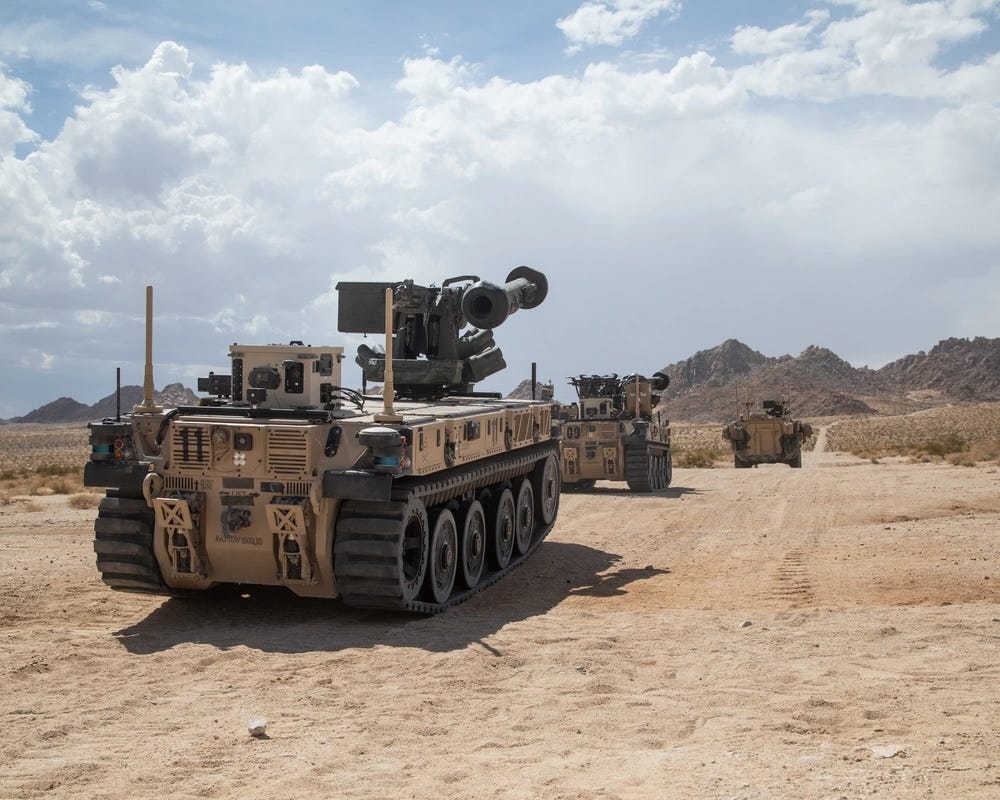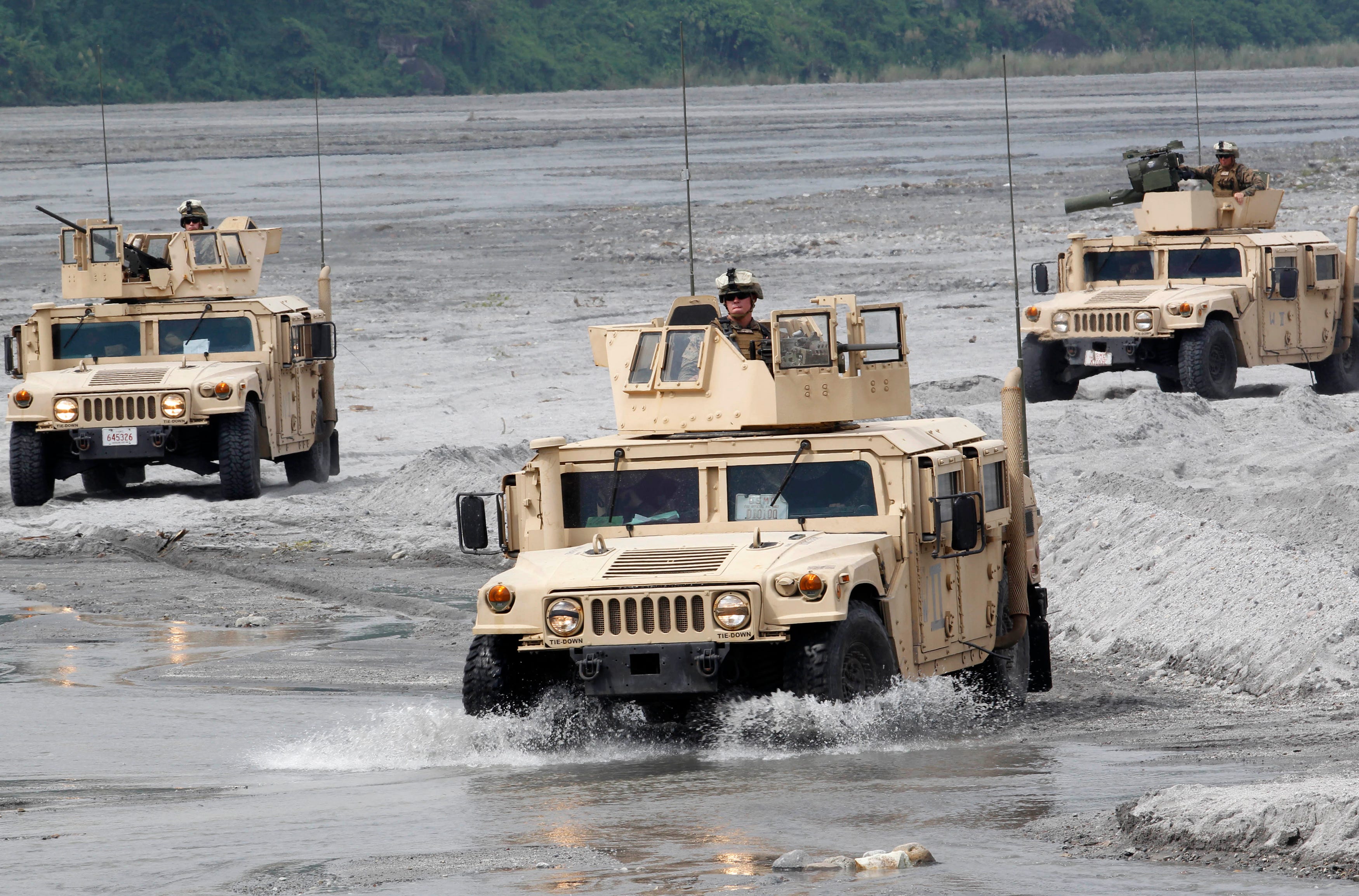
US Army Photo by Daryl Averill Jr.
US Army leaders say Humvees and Robotic Combat Vehicles aren’t useful for future fights, but the Infantry Squad Vehicle is.
Ongoing decisions about what stays and what goes are part of a larger transformation initiative that has the Army reviewing its force structure and cutting certain programs it deems no longer necessary for the kinds of wars the US military wants to be ready to fight should worse come to worst.
Secretary of the Army Daniel Driscoll and Gen. James Rainey, the commanding general overseeing Army Futures Command, talked to Business Insider about some of what is getting axed and why.
Driscoll pointed to the Robotic Combat Vehicle, or RCV, program, which launched in 2019 with the goal of integrating autonomous and remotely operated capabilities into the Army’s ground systems. Three versions were initially planned — an expendable light variant, a durable medium variant, and a lethal heavy variant designed for combat against an enemy armored vehicle.
But the development of the RCV hit snags. “We know we need autonomy, we know that we need the ability to move things in a way that is not controlled by human beings,” Driscoll said.
But the requirements the Army put together for it ended up making it just this “incredibly large, incredibly heavy, incredibly expensive, relatively exquisite tool,” he said. By the time the Army went to purchase them, the threats to the RCV, like small, hostile drones, had grown substantially. In Ukraine, slow, heavy, expensive vehicles have been prime targets for cheap exploding drones.

Savannah Baldwin/PEO Ground Combat Systems
“It might have been there in the beginning and we got it wrong from the very beginning,” he said, “but at a minimum, by the time it came due for us actually purchase a lot of these and get them into formations, it just no longer made sense anymore.”
He called the move to end the program “a hard decision.”
The Humvee, or High Mobility Multipurpose Wheeled Vehicle, is also being phased out. “It’s 40 years old. It was useful in its time,” Rainey said. “If you look at the ubiquitous sensing drones just in Ukraine and Russia, the survivability of a wheeled vehicle is very low.”
The Army also recently ended the M10 Booker Mobile Protected Firepower program just before it was set to go into full-rate production and after spending well over a billion dollars on the project. The decision was made in response to ongoing global conflicts “and in support of the strategic objectives outlined in the Army Transformation Initiative,” according to a memo issued by Secretary of Defense Pete Hegseth earlier this year.
The memo outlined the focal points, timelines, and priorities of the Army going forward, including reducing and restructuring attack helicopter formations and augmenting them with unmanned aircraft, putting thousands of drones into the hands of soldiers, and focusing on the Indo-Pacific theater and China.
The efforts in the directive are estimated to cost around $36 billion over the next five years and represent one of the largest Army overhauls since the end of the Cold War. Army officials have said it’s designed to increase lethality and readiness in the service and is focused on the needs of individual warfighters.
In the interview with BI, Driscoll and Rainey identified one platform that represents what it wants more of. “We have a requirements and acquisitions success story with the Infantry Squad Vehicles,” Rainey said.

Cheryl Ravelo / Reuters
The relatively new M1301 Infantry Squad Vehicle entered service in 2020. Rainey said that the platform was designed well and requirements were useful and thoughtful. “We went fast, but we iterated with soldiers continually through the process. We ended up with a very useful vehicle,” he said.
Driscoll said that in conversations with soldiers, the Army learned that they wanted a vehicle to prioritize speed and all-terrain driving over protection.
It speaks to, the service secretary said, the Army “trying to build a menu of offensive and defensive solutions.” For some missions, something like the Infantry Squad Vehicle will be more effective. And for others, a heavier, more armored platform could still be valuable and available.
Much of what Driscoll and others say they’re focused on comes out of efforts to be smarter and more cost-effective in Army purchases.
“We feel a large enough existential threat, and it is important enough that we can no longer make decisions simply based off where jobs might exist or what private companies may benefit from our decisions,” he said. “Instead, we have to optimize for soldier lethality in the fight ahead.”
Lethality is a guiding principle for the US Department of Defense under Hegseth and the Trump administration. It was a core objective for the Biden administration and first Trump one, as well as past administrations, though the interpretations were different. Generally, it serves as a subjective measuring stick for DoD programs and projects, the aim being to be able to effectively defeat an enemy.
Right now, that long-standing Pentagon buzzword is the deciding factor for what the Army and other services prioritize.
The post The US Army’s done with Humvees and the Robotic Combat Vehicles. Here’s what leaders want instead. appeared first on Business Insider.




